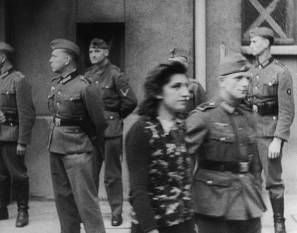HISTORY OF PERSECUTION
Austria became part of the German Reich in March 1938. Between 1939 and 1945, Germany and its allies spread a war of exploitation and extermination over Europe. By its end, some 35 million people had lost their lives.
Nazi military justice was an important instrument of war for the political and military leadership, which set off a flood of trials in order to thwart any deviation within the German army, the Wehrmacht. As the war progressed, the sentences issued by military judges became increasingly severe. Many of the sentences were suspended until after the war and replaced by »probation at the front«.
One Million Trials
In total, Nazi military courts conducted at least one million trials. Even minor offences frequently yielded long prison sentences. Many died in prison due to the harsh conditions, and there is only little research on how many soldiers perished while imprisoned or serving in penal units or other special units.

Simone Schloss, Mitglied einer kommunistischen Widerstandsgruppe bei einem Schauprozess vor einem deutschen Militärgericht in Paris 1942
German military justice also affected Austrian soldiers and civilians. Wehrmacht judges also tried allied prisoners of war. Between 7,000 and 10,000 death sentences were meted out to members of these two groups alone – it is not known exactly how many of the sentences were carried out.
15,000 Death Sentences Against Deserters
The dimensions of the verdict ratio become clear when comparing the way in which the largest group of convicts, the deserters, was dealt with: while Nazi military justice carried out death sentences against 15,000 deserters during World War II, the US Army carried out only one death sentence against a deserter between 1941 and 1946. The military justice of the armies in the German Empire (1871 – 1918) carried out a total of 18 death sentences against deserters.
Austro-Hungarian courts martial conducted about three million trials, meting out some 30,000 death sentences, particularly to civilians in Eastern and South Eastern Europe. Although the Austrofascist dictatorship (1933 –1938) did use the army to suppress the »internal enemy« (social democrats, communists and national socialists), it did not introduce an independent military justice to this purpose. Following Austria’s »Anschluss« (»annexation«) to Germany in March 1938, the Austrian army was incorporated into the GermanWehrmacht, taking on its military justice and code of criminal procedure.
Literaturhinweise
History of Persecution

